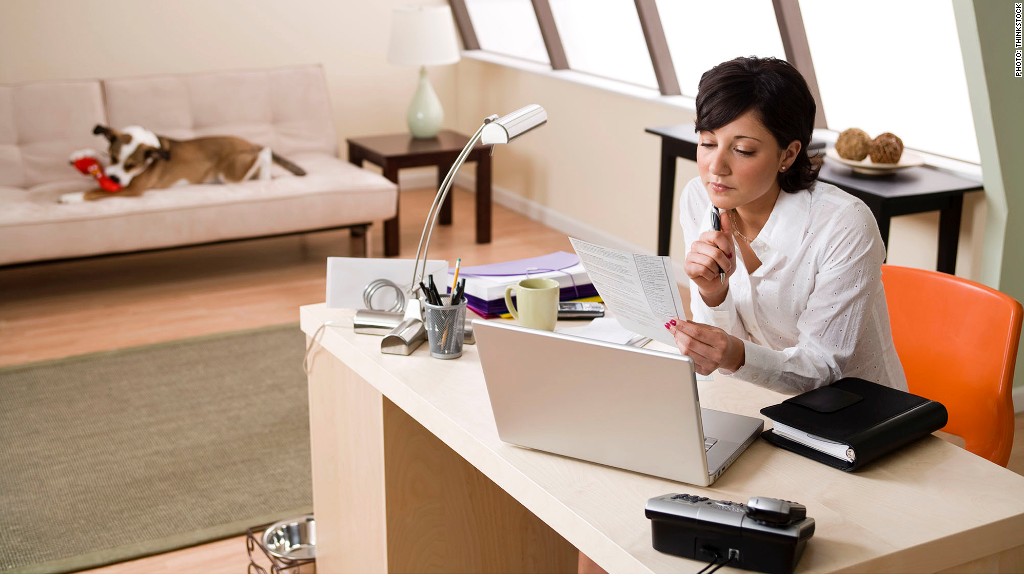Improvements in technology mean that working from home is more manageable than ever before, note Kirsty McDonald and Joseph Williams.

For many reasons, employees are increasingly seeking flexibility in their working arrangements, not only in respect of their hours and days of work but also in the ability to perform their work remotely.
Many employers have already begun utilising these arrangements to attract and retain staff and, given the benefits arising from such arrangements, the demand for remote working is likely to increase in the future.
What is a workplace?
Under the Health and Safety at Work Act 2015 (the HSWA), an employer as a ‘person conducting a business or undertaking’ (PCBU) has a duty to ensure, so far as is reasonably practicable, the health and safety of its workers while they are at work.
The definition of ‘workplace’ under the HSWA is extremely broad. It includes any place where work is being carried out, or is customarily carried out for a business or undertaking, including any place where a worker goes or is likely to be while at work.
Therefore an employee’s home could also be seen as a workplace if they regularly work remotely.
In addition to the employee’s own duty to ensure their personal health and safety, the employer owes a duty to ensure that steps are taken to ensure the employee’s workplace is safe and healthy.
The focus of this article is on an employer’s duties to employees working from home. However, the obligations discussed will also extend to contractors and volunteers.
Any type of worker engaged by a PCBU who works from home will be responsible for their own health and safety and will be required to comply with any reasonable instructions and/or health and safety policies.
Employers’ duties to employees working from home
The starting point for assessing an employer’s duties is the obligation to ensure the employee’s safety and health “so far as is reasonably practicable.”
Clearly, the level of control an employer can have over the health and safety of an employee who is working from the employer’s premises is greater than the control the employer can have over an employee working from home.
There are presently no specific guidelines from WorkSafe New Zealand (WorkSafe) regarding the scope of an employer’s obligations in relation to health and safety compliance for home workspaces.
However, there are a number of steps an employer can take to minimise the risk of harm to an employee who works remotely.
These are particularly relevant for employees who have a formal arrangement to work from home, rather than simply on an ad hoc basis.
Practical recommendations for establishing a permanent flexible-working arrangement
If an employee is seeking to regularly perform some of their work from home, the employee should make a written request (a “flexible working request” under part 6AA of the Employment Relations Act 2000) to vary the terms and conditions of his/her employee’s working arrangements (including their place of work). Once the request is received, the employer is obliged to consider it.
Part 6AA sets out an exhaustive list of grounds for refusing a flexible working request, but notably health and safety is not one of them.
However other grounds such as the impact on quality of work, the impact on performance or the burden of additional costs may be relevant considerations.
Once an employer has agreed to the implementation of a flexible working arrangement, there is no mechanism under the ERA for amending or rescinding the agreement.
Therefore it would be advisable, before responding and agreeing to the remote working arrangement, to discuss with the employee the practicalities of the arrangement, including the parties’ respective health and safety obligations.
A practical step any employer should take (prior to agreeing to a remote working arrangement) is to conduct a home workplace risk assessment. Relevant considerations may include:
- the ergonomics of the proposed workstation;
- the isolation of the proposed workstation from possible distractions;
- the suitability of equipment for performance of work;
- plans for protecting the security of data and personal security of the employee;
- suitable fire safety equipment and emergency procedures; and
- identification of any other risks/hazards that need elimination or minimisation.
If the finding of the risk assessment is that an employee’s home workspace is unsuitable in its present state, the employer must take all “reasonably practicable steps” to ensure that it is.
The employer may need to consider providing assistance such as a financial contribution to the purchase of suitable equipment, or at least discussing with the employee whether they are willing to absorb any costs themselves.
Ultimately, if the employee is unwilling to meet the costs, it may be that the flexible working request could be refused by the employer on financial grounds.
If the workplace is suitable or can be made suitable, and the employer agrees to the flexible working request, we recommend implementing a formal policy setting out the parties’ respective health and safety obligations when working remotely.
Working from home policy recommendations
Whether regular or ad hoc, we would recommend that an employer has a policy setting some minimum guidelines for the parties’ respective health and safety obligations when working from home.
It is important that this policy not only considers the obligations to ensure an employee’s physical health and safety, but also ensures any risks to the employee’s mental health are eliminated or minimised.
In general, we would recommend that all policies include the following conditions:
- the employee agrees to ensure their home workspace is arranged so that it is comfortable and ergonomically sound;
- the employee agrees to take regular breaks;
- the employee agrees to ensure the workspace is kept clear and free from obstacles or tripping hazards, and is well lit;
- the employee agrees to ensure all work-related information and data is kept secure;
- the employee agrees to keep in regular communication with their managers and proactively discuss any problems that arise from working from home; and
- if a risk of harm to the employee’s physical and/or mental health and safety arises, the employee agrees to consult with the employer about ways this harm can be eliminated or minimised.
Maintaining health and safety standards
As with office workstations, annual reviews of home workstations should also be completed to ensure they remain fit for purpose.
Depending on the resources available to the employer, this could be addressed through the employee:
- Discussing their workspace and home workspace setup with an occupational therapist;
- Sending the employer a photo of their setup; or
- Having a follow-up in home visit from an occupational therapist.
The employer should be in frequent contact with the employee regarding the effectiveness working arrangement, including any issues or concerns arising from the remote working.
If any serious issues do arise, then the employer should consult with the employee as to how these risks might be eliminated or minimised.
Depending on the circumstances this could be anything from making some minor adjustments to improve the working environment (such as varying the proportion of the employee’s time they spend working from home), or in the most serious of cases, proposing that the employer return to working from the office in a full time capacity.
In the event of a notifiable incident of an employee working remotely
As with any other accident, WorkSafe may investigate if a notifiable incident occurs when an employee is working remotely. This would likely include visiting the site of the accident.
Any such investigation would likely centre around:
- what hazards/risks were present;
- what mechanisms were in place for eliminating or minimising such hazards/risks; and
- whether anything else could reasonably have been done to ensure health and safety.
While each situation would differ depending on the circumstances, at a minimum we would anticipate WorkSafe would expect to the following steps to have been taken:
- a specific policy setting out the parties’ respective obligations regarding health and safety, including guidelines on setup and maintenance of a safe and healthy workspace;
- evidence of an assessment of the home workspace to ensure its suitability from a health and safety perspective; and
- evidence of communications between the employer and employee regarding the remote working arrangements and any issues or concerns.
Greater clarity on WorkSafe’s expectations in relation to the above will no doubt come as case law in this area continues to develop.
The preliminary requirements for an employer to properly establish a remote working arrangement with an employee may seem daunting from a health and safety perspective.
However, once an effective flexible working arrangement is established, the respective benefits to both the employee and employer are likely to far exceed the initial hurdles.
For more information on any of the matters discussed above, please contact a member of the Duncan Cotterill specialist employment team.
Kirsty McDonald is a Partner and Joseph Williams a Law Clerk at Duncan Cotterill, a full service law firm with a full service offering and locations in Auckland, Wellington, Nelson & Christchurch.
Disclaimer: the content of this update is not intended as a substitute for specific professional advice on any matter and should not be relied upon for that purpose.




